As a new potato grower, it’s natural to want to stuff potatoes in every square inch of space. (That’s not just me, right?)
After growing potatoes way too close together my first year, I now know better.
Potatoes need to be spaced a minimum distance apart in order to fully develop.
Here’s what I’ve learned … and what you need to know.
How Spacing Impacts Potato Plant Growth
Spacing is a game-changer for your potato plants. Getting it right can transform their health and the bounty that you harvest.
Potatoes are not hard to grow, but they do need their fair share of soil nutrients, plenty of sunshine, and good air flow around its leaves and stems.
Cram them too close together, and they’ll compete fiercely for these essentials (often to their detriment). Yet, too far apart, and you’re not making the most of your garden space.
If you strike the right balance, and you create the perfect conditions for your potatoes to thrive, minimizing risks of disease and maximizing growth.
Optimal Plant Spacing for Potatoes
Potatoes show remarkable adaptability when it comes to how far apart they’re planted. You have some room to experiment as these tubers can thrive under various conditions.
That said, don’t let this flexibility mislead you into overcrowding them. Keeping a good distance is key.
Let’s look at a few specific potato-growing scenarios and the ideal spacing for each.
By the way, these spacing tips will be the same regardless of the potato varieties you plant and if you plant certified seed potatoes or grocery store potatoes.
Spacing for Traditional Rows

Planting potatoes in traditional rows offers a methodical approach to maximize your garden’s yield while maintaining plant health.
With this growing method, you’ll want to space your potatoes about 12 inches apart. This distance gives each potato ample room to grow and access sunlight and nutrients without unnecessary competition.
For the rows themselves, aim for a separation of 18 to 24 inches, which ensures adequate air circulation—key to preventing the spread of fungal diseases among plants.
Using this method helps organize your garden, too, making it easier to navigate and manage your potato crop as it grows.
Spacing for Containers
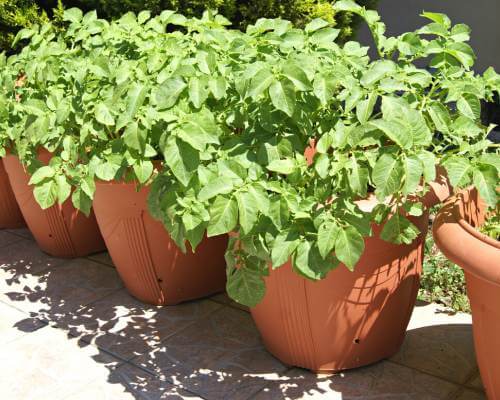
Planting potatoes in containers offers you a compact, efficient way to grow them, especially when space is tight.
Start with a large container, at least 12 inches deep, to give your potatoes enough room to develop. Aim for containers with ample drainage holes at the bottom to prevent waterlogging, which can rot the tubers. Don’t skip this step because well-drained soil is critical for potato growth.
(Here’s how to amend your soil for the best potatoes.)
For pot size, bigger is generally better when it comes to potatoes.
As for how far apart to place seed potatoes in the pot, stick to three seed potatoes for a container that’s 24 inches in diameter. Just multiply number accordingly, depending on your container size.
This spacing prevents the plants from competing for nutrients and sunlight, ensuring each has the resources it needs to thrive.
Remember, too many plants in a single container can hinder growth, leading to smaller potatoes. This is especially true for red potatoes, which don’t get very big as it is.
By the way, not all is lost if your potatoes turn out small (or if you accidentally harvest too early). In fact, new potatoes at the grocery store are just early potatoes that were harvested before full maturity.
Spacing for Square Foot Gardens
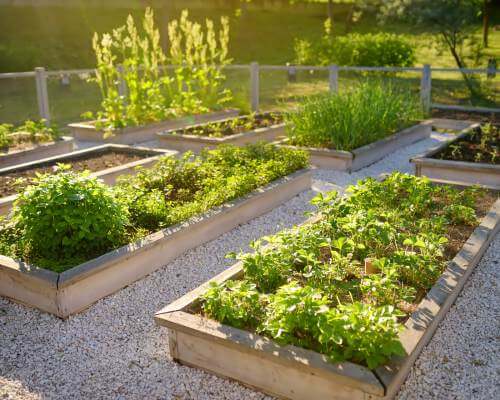
Square foot gardening principles streamline the process of growing potatoes by ensuring every inch of your garden works hard—a must-have when growing in a small space.
In this approach, your gardening area is divided into square feet, and each square is allocated to a specific number of plants based on their size and growth needs.
Here’s the handy dandy spacing tool that I use:
Prices pulled from the Amazon Product Advertising API on:
Product prices and availability are accurate as of the date/time indicated and are subject to change. Any price and availability information displayed on [relevant Amazon Site(s), as applicable] at the time of purchase will apply to the purchase of this product.
For potatoes, you might consider planting one or two seed potatoes per square foot, depending on the potato variety and your desired yield. Just a tip—if you chitted your potato tubers before planting, use the smaller pieces in your square foot garden.
This method is a fantastic way to grow more food in less space. Due to the concentrated nutrients and organic matter that you add when square foot gardening, you can grow a sizable crop in a compact area.
By carefully spacing your potato plants in this pattern, you promote better air circulation around each plant, which can help prevent potato blight.

Dream of Filling Your Pantry with Homegrown Staples?
Plan your garden with our FREE PRINTABLE—Staples Garden: What to Plant to Feed Your Family for a Year!
How Deep to Plant Potatoes
Planting potatoes at the right depth can make or break your harvest. You want to bury seed potato pieces under about three to four inches of soil. This depth allows enough soil cover to prevent sunlight from reaching the developing tubers, avoiding the risk of them turning green and toxic.
Additionally, deeper planting encourages stronger root systems. These roots anchor the plant, improving its access to nutrients and water.
(Here’s a guide to watering potatoes if you need it.)
Still, just as with space, there’s a balance to strike with depth.
Plant too shallow, and you risk the potatoes being exposed to direct sunlight, turning them into green potatoes that you can’t eat.
Planting too deep, however, may hinder sprout emergence, especially in cooler or heavier soils. This can delay or stunt plant development, reducing your anticipated yield.
Finding that sweet spot is key to nurturing potato plants that are as bountiful underground as they are above—and that sweet spot is somewhere between 3 to 4 inches, planted in a single layer.
What Happens if You Plant Potatoes Too Close Together?
Planting potatoes too close together can lead to a few unwelcome outcomes. For starters, each plant competes for the same nutrients and water, which can seriously hinder their growth.
Imagine trying to thrive when your resources are constantly being hijacked by your neighbors. Not ideal, right?
That’s precisely the scenario your potato plants find themselves in when they’re too cozy with one another.
Not only that, but airflow gets restricted between tightly packed plants.
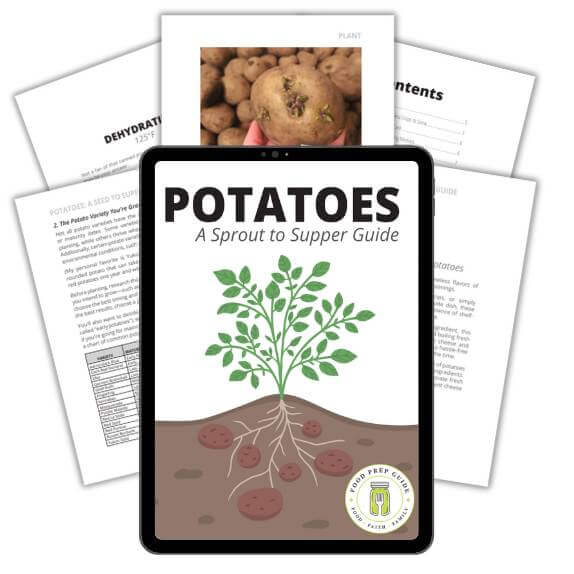
Master Potatoes From Seed to Table
Get growing & preserving faster with no-fluff tutorials for every step from plant to plate!
This might not sound like a big deal at first, but it creates a perfect environment for diseases to thrive and spread. Damp conditions with poor circulation are playgrounds for fungal and other pathogenic parties, leading to unhealthy plants and a disappointing harvest.
And trust me, you don’t want to spend your whole growing season caring for your plants, only to watch them succumb to avoidable illnesses before harvest time.
(By the way, here’s how to tell when potatoes are ready to harvest.)
So, while it might be tempting to squeeze as many plants as possible into your space, remember, giving them a bit of elbow room can make a world of difference in their health and your harvest.
Can You Plant Potatoes 6 Inches Apart?
Planting potatoes 6 inches apart might seem like a great way to save space, especially if you’re working with a smaller garden.
This close arrangement allows you to fit more plants into a given area, potentially leading to a larger harvest from a smaller plot. It’s particularly tempting for home gardeners eager to make the most out of every square inch of garden soil.
However, this strategy has its drawbacks.
I don’t want to sound like a broken record. We’ve already covered all the reason why it’s not a good idea to plant potatoes too close together:
- Their roots will compete for nutrients.
- There won’t be adequate air circulation around the plants.
- Chances increase for developing late blight.
These issues can negate any potential benefits of planting potatoes closer together.
For those considering the 6-inch spacing, it may work under specific conditions—such as using varieties known for smaller tubers or in regions with consistently ideal growing conditions.
Yet, for the average gardener seeking a reliable harvest, stick to the recommended spacing guidelines of approximately 12 inches apart.
How Many Potatoes Can Fit in a 4×8 Raised Bed?
A 4×8 raised bed provides ample space for this versatile crop, but you might wonder just how many can fit.
To get the most out of your bed without crowding, a bit of planning goes a long way.
First, let’s talk about spacing. Ideally, you’d space your potato plants about 12 inches apart, in rows that are 18 to 24 inches apart. This setup ensures each plant has enough room below the soil to develop those delicious tubers we’re all after.
Given these parameters, let’s do some math.
The length of the bed, 8 feet, divided by the space needed between rows, let’s use 24 inches (or 2 feet for simplicity), allows for 4 rows of plants.
On the other hand, the width of the bed, 4 feet, divided by the space between plants, 1 foot, results in 4 plants per row.
So, multiplying the number of rows by the number of plants per row gives us our final count. That’s 4 rows times 4 plants per row equals 16 potato plants in a 4×8 raised bed.
This layout makes the most of your space while still allowing each plant enough room to grow without hindrance.
Remember, these numbers can vary slightly based on the variety of potatoes you choose to plant and their specific needs. Some may require a bit more space, while smaller varieties could be placed a tad closer together.
Nonetheless, this calculation is a great starting point for getting your potato garden going strong.
If your goal is to grow big potatoes, proper spacing is essentially the foundation for a successful harvest.
Whether you’re embracing traditional rows, compact containers, or the efficient square foot gardening method, maintaining adequate space between plants is paramount.
With soil temperature and moisture levels fluctuating as we transition into early spring (which is when you want to plant potatoes, by the way), strategic placement of potatoes in areas boasting full sun and acidic soil ensures optimal growth conditions.
Failure to adhere to recommended spacing guidelines may result in plants vying for nutrients and air, potentially inviting diseases like late blight to wreak havoc on your garden.
While the temptation to maximize space may lead some to consider planting potatoes as close as 6 inches apart, it’s wise to heed the advice of experts and maintain a more generous distance for optimal results.
So, as you plan your potato patch, whether in a raised bed or traditional garden plot, remember the golden rule of spacing—enough room for each plant to thrive without encroaching on its neighbor.
READ NEXT: How Long Does It Take for Potatoes to Grow?




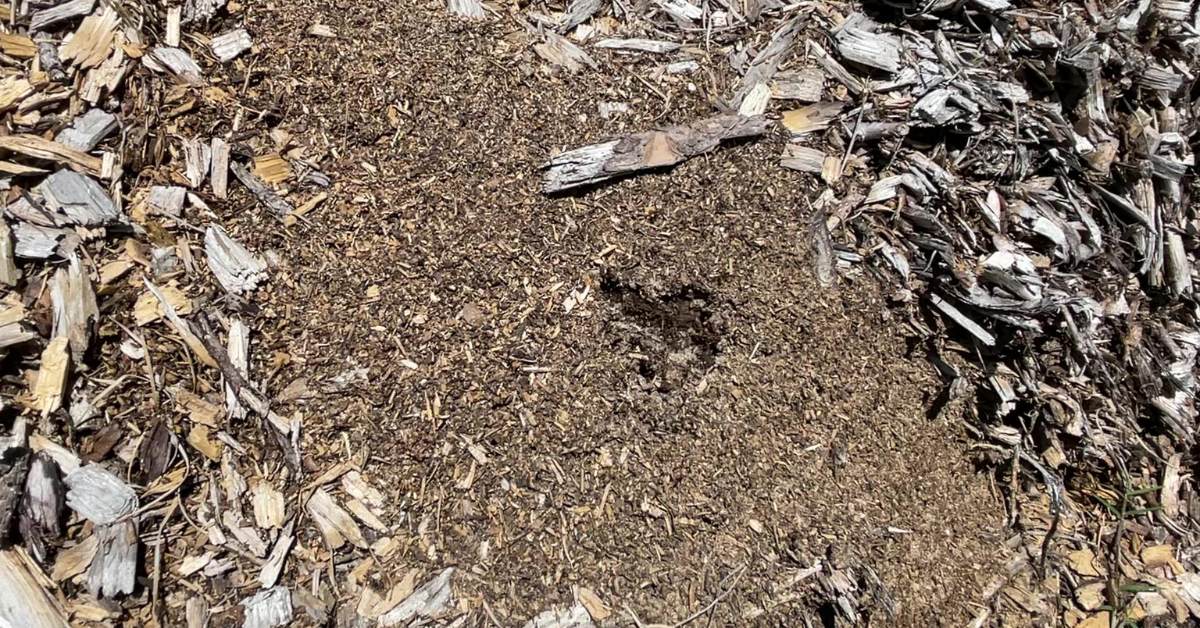




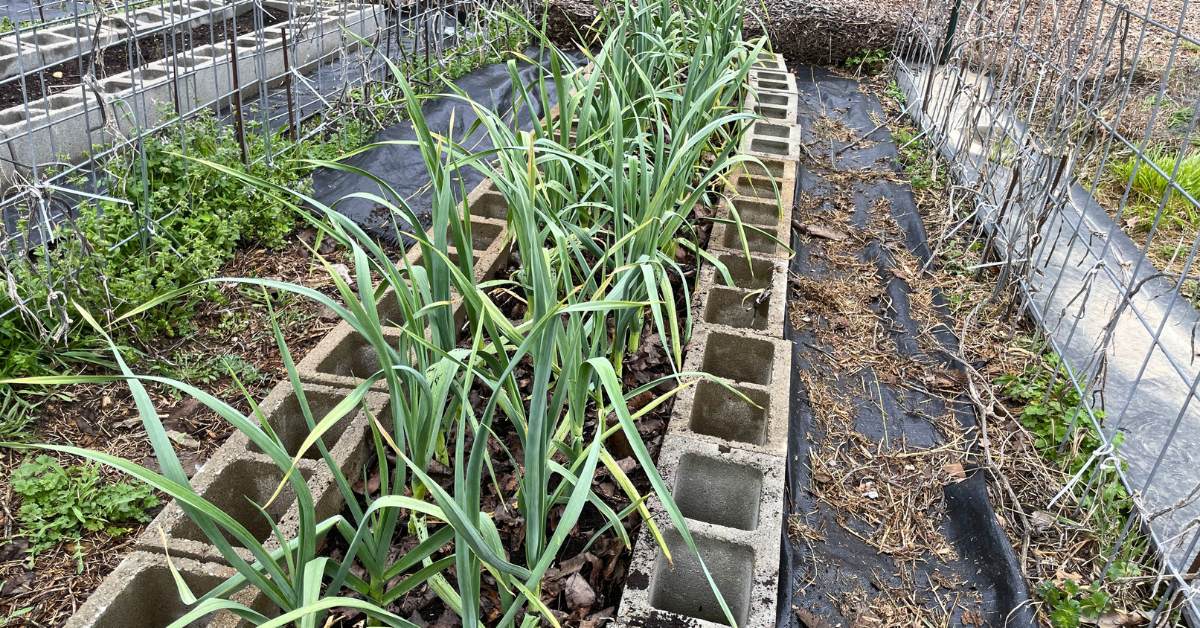
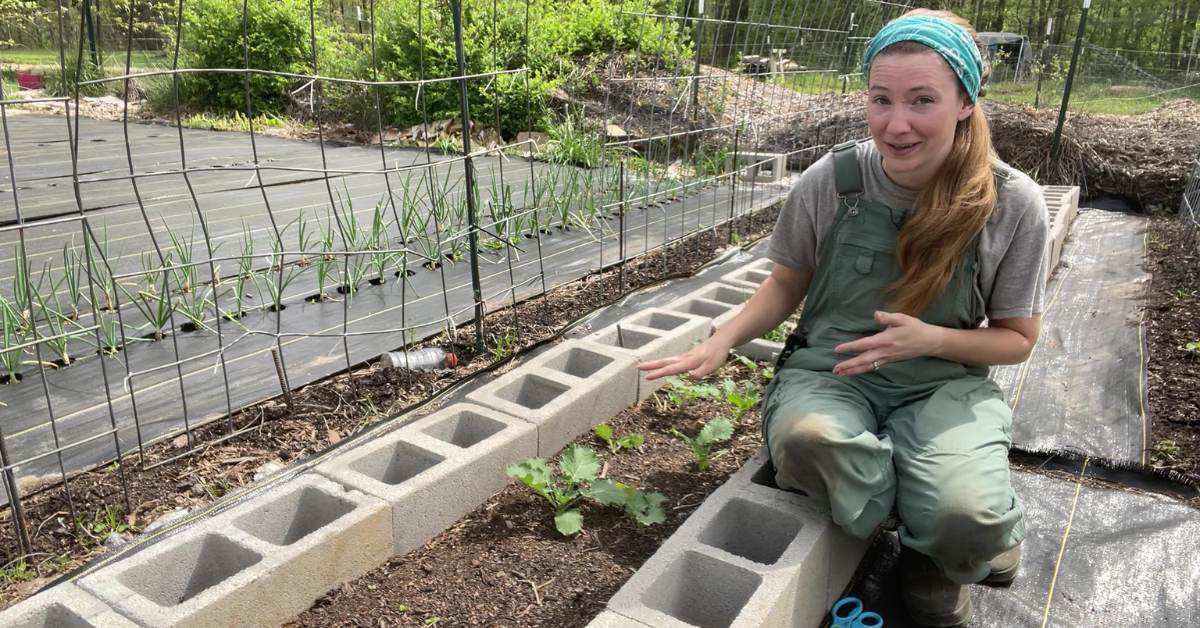
Curious as to why you did not mention how many eyes to plant 12″ apart. What is the difference between planting one eye every 6″ and planting a whole potato every 12″? Do you cut up your potatoes? If so, how many eyes per piece? Maybe you talked about this in a previous or subsequent post. Anyway in an article about how close to plant potatoes, how many eyes per planting would seem to be important. Thanks!
I don’t find that the eyes per potato impacts spacing requirements. I’ve done and continue to plant both ways whether it be the whole potato or cutting them up.
If cutting them, you want at least two eyes per potato chunk (in case one eye doesn’t sprout or grow properly).
As to why it doesn’t impact spacing, I think it’s due to the amount of “food” available to each eye. For instance, a whole potato will likely have multiple eyes, and that’s okay because they have a whole potato to “feed” off of and support the growth of that many eyes.